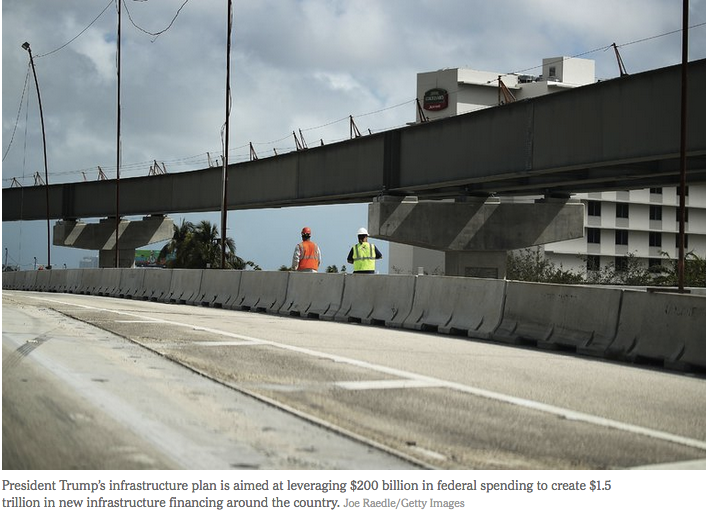WASHINGTON — Independent analysts are beginning to forecast that President Trump’s infrastructure plan will pack much less of an economic punch than the administration predicts and is unlikely to jump-start new spending on roads, bridges and other critical projects.
Mr. Trump has promised that his plan, which includes $200 billion in federal spending, will leverage a total of $1.5 trillion in new infrastructure spending over the next decade, with $1.3 trillion coming from state and local governments and the private sector. A new forecast from the University of Pennsylvania’s Penn Wharton Budget Model predicts the plan would yield far less investment: $20 billion to $230 billion in combined public and private infrastructure spending over the next decade, including the $200 billion federal investment.
The Penn analysis predicts the Trump proposal would have “little to no impact” on economic growth over the decade. Mr. Trump’s Council of Economic Advisers forecast this week that a 10-year, $1.5 trillion plan would increase average annual economic growth by 0.1 to 0.2 of a percentage point.
The budget model’s forecasts draw on a wide range of economic literature that finds federal grant programs, similar to the ones Mr. Trump proposes to employ for infrastructure, often do little to encourage states and localities to spend more than they would have otherwise in the intended area. Instead, states often claim federal money to fund existing plans, and then free up state funds for other, unrelated spending, said Kent Smetters, an economist who served in the George W. Bush administration and now directs the budget model.
“When we reviewed the literature,” he said, “there just really is no set of studies that support that massive multiplier effect, where you can get $1.5 trillion.”




